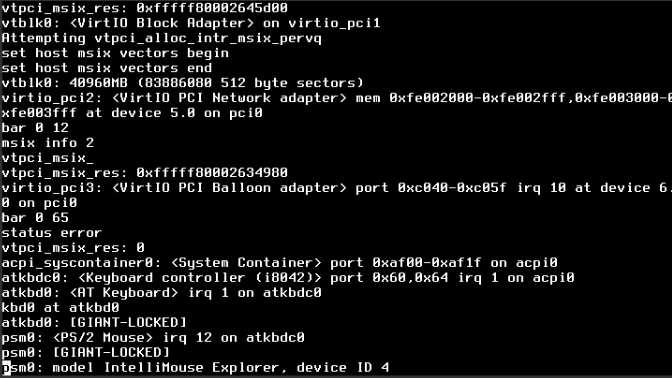到了重庆
流水账,简要记录:
- 半夜三点多起来,没再睡着,临时决定收拾东西,准备搭5:20分开往广州天河汽车站的客车
- 因为肚子饿,煮了面条吃,又换锅煮了几个鸡蛋打算在车上吃。但在厨房里这么一折腾,时间显得不够。约在5:52分,我匆忙关水、关电出了门
- 我到了楼下,天还没亮,需要借助路灯看路,头上下着毛毛雨
- 为赶时间,我开始小跑。左右肩膀各搭了条袋子,总共约八斤,我小跑到御水桥,停下来看了下时间,显示5:02分了,我不想跑了,因为觉得身体会受不了。我看到桥头附近停有“青桔”电动车,尝试用支付宝扫码用车,但app提示“超出经营范围”。我从没在和平使用过“青桔”电动车,觉得道理有点说不通,这不是在“城区”吗?于是我再扫了一次,页面却转到“滴滴打车”的界面上了。好吧,那就打车,因为再耗下去,我连坐车到车站的时间也要没了。焦急地等地图上显示的一辆从福和大道上过来接我的车。我怎么觉得这短短的几分钟好难、好难过啊。我不停地左右走来走去。司机停车后,我上车后的第一句就是,“车站。五点二十分的车,能赶得上吗?”司机没有回答,默默地开车了
- 车子停到了路边,我又看了时间,来得及。我下车看到车站临路的门头没拉,关着。我茫然地问,“车呢”?不知所措。“进里边啊。”这时,我听到司机在车上回答了一句。我从车站栏杆旁的小路进,看保安亭的玻璃,见到里边有人在打盹。他仿佛知道有人在看他,也知道我想问他什么,因为他向旁边停着的一排客车指了指,示意我直接去找车。我走近,看到某一辆车的前边有几个人在闲聊,我走近,然后留意车头上的标识,是广州班。我上车,买了票。这时,显示时间约5:12分。我听到车上的人对话,“打算乃时归?”“下昼就归。尔呢?”“明朝日归,检查爱拖一日。”可能车上有的人,曾多次搭这早班车到广州的大医院看病,彼此相熟。“滴滴打车”约花了10元,支付宝送了张券,全部抵扣了。
- 和平客车到达广州天河客运站,我从站内走出来,看到的时间约是9:45分。坐客车约三个半小时,票价80元。我不知道地铁入口在哪里,就跟着一个背着包出站的人走,果然到了地铁入口。我停下,从支付宝app里查询,确认是能从天河客运站坐地铁(中转)到广州南站
- 我用支付宝app里的地铁码,无法刷开闸,进不去。小屏幕显示是让我去联系工作人员。我走到离我最近的一个穿米黄色的工作人员,问她是不是这么地扫码进闸,她点了点头。我再一次尝试用支付宝app刷码进闸,还是提示一样的错误。我无奈地退到闸旁,因为我这样磨蹭地开不了闸,影响到了后边想赶车的人。我突然想到,支付宝不可以,或许微信可以。我换成微信的地铁码,果然显示绿色,开到闸了。估计是我在六年前,曾使用微信绑定的另一个手机号开通过广州地铁码,这次与支付宝绑定的不同手机号起冲突了
- 我被动地跟着前边的人流,在地铁的通道和楼梯里不停地走。当我看到头顶上的指示牌都是6号线时,我迷糊了,因为我是跟着3号线的箭头走的。我停了下来,东张西望,还是没找到3号线的指示信息。我看到有一位穿红马甲的工作人员在推铁栏,我走上前,去问。他指了指靠墙的一个小通道,说那儿可以坐3号线。我按着他指的方向走了过去,是下楼梯的,的确是可以坐到3号线。第一趟我没上到车,要等下一趟。我看着空着来的地铁,仅第一个站,已经涌上了不少人。我盯着手机看站点,对比着语音播报的到站信息。听着听着,我觉得不对劲,因为播报着的终点站是“大石”站,而我想转乘的“汉什么长隆”站是在它后边。我不安起来,我该不是坐错车了吧?我侧头,指着手机屏幕上的站点信息问旁边戴着口罩的妹纸。她说,可以在“大石”站下车,等它的下一趟,再到“汉什么长隆”站转乘。我切换着手机里显示的几个线路规划信息,决定就近在“南洲”站下车,转乘广佛线。我又跟着人流转啊转。看着这些俊俏的背影,打扮潮流的青年人,觉得他们是城市的主人,是未来的基石。我上到了广佛线,看到斜对面有个工作人员,我问线路信息。她很好,详细地回答。当快到站点时,她还热情地提示我下站和转乘要走的楼梯。当我走到地铁的广州南站D出口,迎面就看到了广州南站的指示牌,说上楼有候车厅。在广州转地铁,用了约一个多小时,扣了7元钱
- 我在美团app上查询车次信息,最近的一趟到重庆西站的车是10:27发车。我拦着一个工作人员,问她现在买票来得及吗?她答说不一定,因为排队过安检要花时间。我追问说,还有20分钟啊,还不够吗?她说那你去问问安检的人能不能上车后再买票。我急匆匆上到楼上的大厅,看到自助通道,但要凭证才能过闸。我打开美团app,显示“无座”,是否“候补”。我想,下一班车是11点多开出,晚一个多小时到达重庆,那不如现在出发,早点到达好些。我想订“无座”票,但美团app的页面却提示“抢票”和“选席”之类大按钮的,搞得我不知道它是在帮我订票还是在促销打广告。我激动之下,换到了12306的app来操作。12306的app提示距离发生时间很短,需要确认是否赶得上。我在网上买到票后,刷身份证过闸,闸机上显示着我的票面基本信息。然后过安检之类的,印象中前后过了三道卡后下楼梯,见到停在站台的D1826车
- 因为我的是无座票,所以我在2号和3号的连接处、车门的过道里站着。开车不久,有个穿制服的工作人员问我到哪。我拿住正在喝着水的杯盖,答说是到重庆西。她接着问我是不是无座票。我笑着回答说是,因为到广州南站后才决定坐这辆车的。她要我出示身份证,我掏给她,她在一个手持的设备上验证后递回给我,并且说车厢里边有空座位时,可以去坐,后边有人上车找位时及时让出就行。我不打算去车厢里找暂时还没主人的座,因为不知道什么时候会被赶座,我脸皮薄,情愿坐在车门道的地上。在“无座”的这八多个小时里,除了第一个验身份证的工作人员,还有其他,如搞清洁的阿姨和戴着帽子的帅哥提醒我到车厢里边插空儿找座坐。如我这般杵在门道上的,还有一个在“从江”站下车的大哥。他也是自上车后,一直在车门边“站票”。他有经验些,他是将自己带着的一个胶袋行李放在地上,然后当凳子坐。我觉得这办法好,因为我直接屁股着地坐,有点凉。后来,我也学他,把自己的提袋放在地上垫着坐。我偶尔站在门后,握紧扶手,看着玻璃窗外快速变换的景色,在想,是不是我自己的人生也是张“无座票”——我在这个社会存在着,但没有“成就”的位置;同样是生命,但生命的体验感是截然不同的
- 18:59分,我在重庆西站下车,到站时间比票面显示的迟了约十分钟。车程约八个半小时,票价423元。我按通道的提示牌找公交车的接驳出口。路上几乎没有其他人,我的“跟人”策略无效,只好等在原地,等到一个拖着行车的大叔向他问路。他用四川口音回答我,指出了499路公交车的出站楼梯。我走出地面,果然是看到前边有公交车停靠。499路公交车播放着有声视频新闻,到站的声音我反而听不清楚。我只好打开高德地图app,查询实时的车辆轨迹,以核对车子到了哪个公交站。499路公交车票价2元
